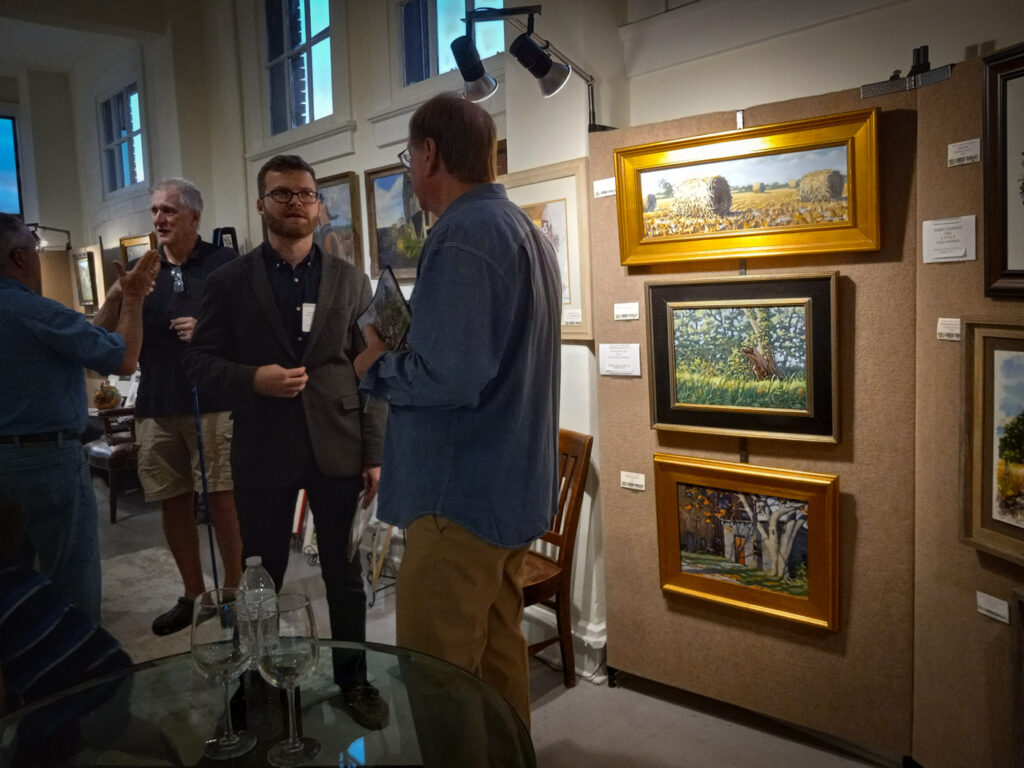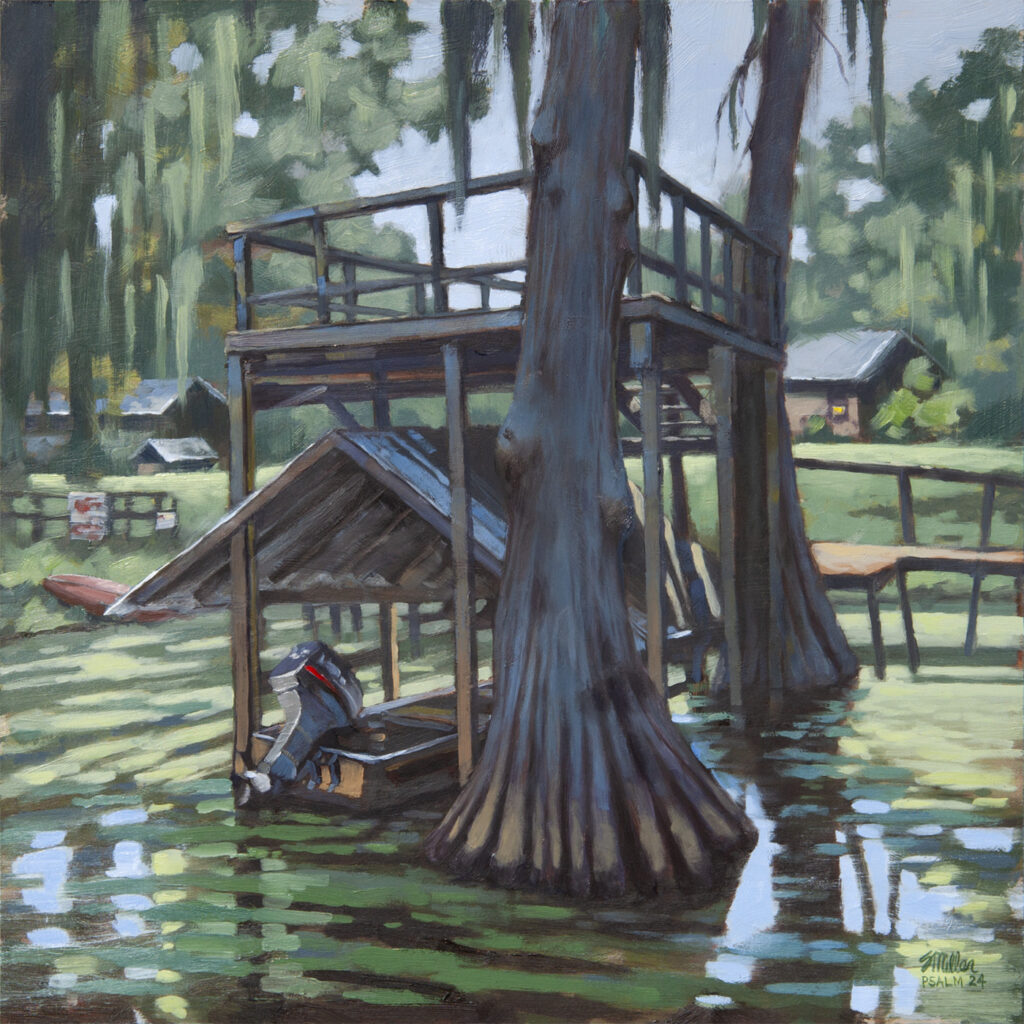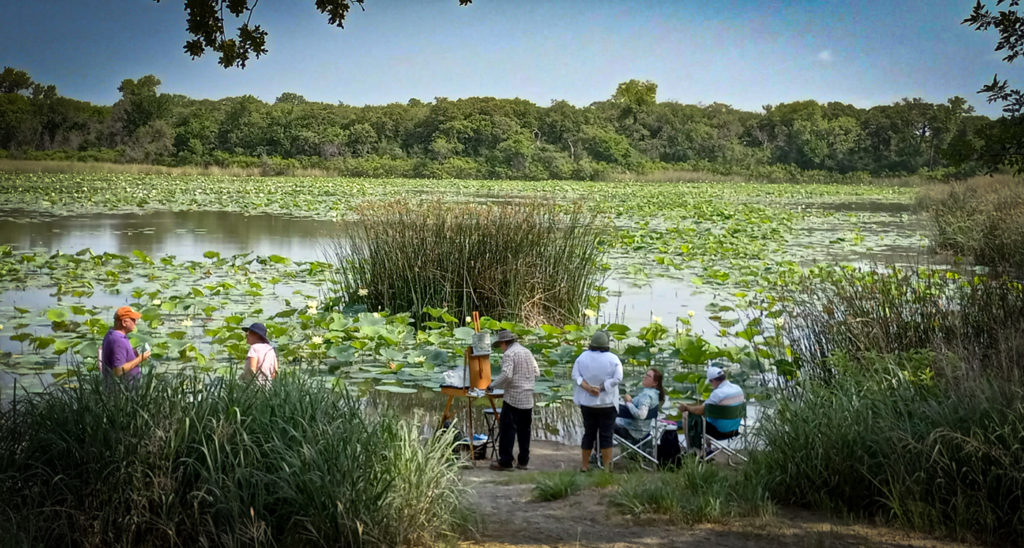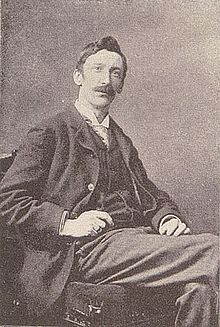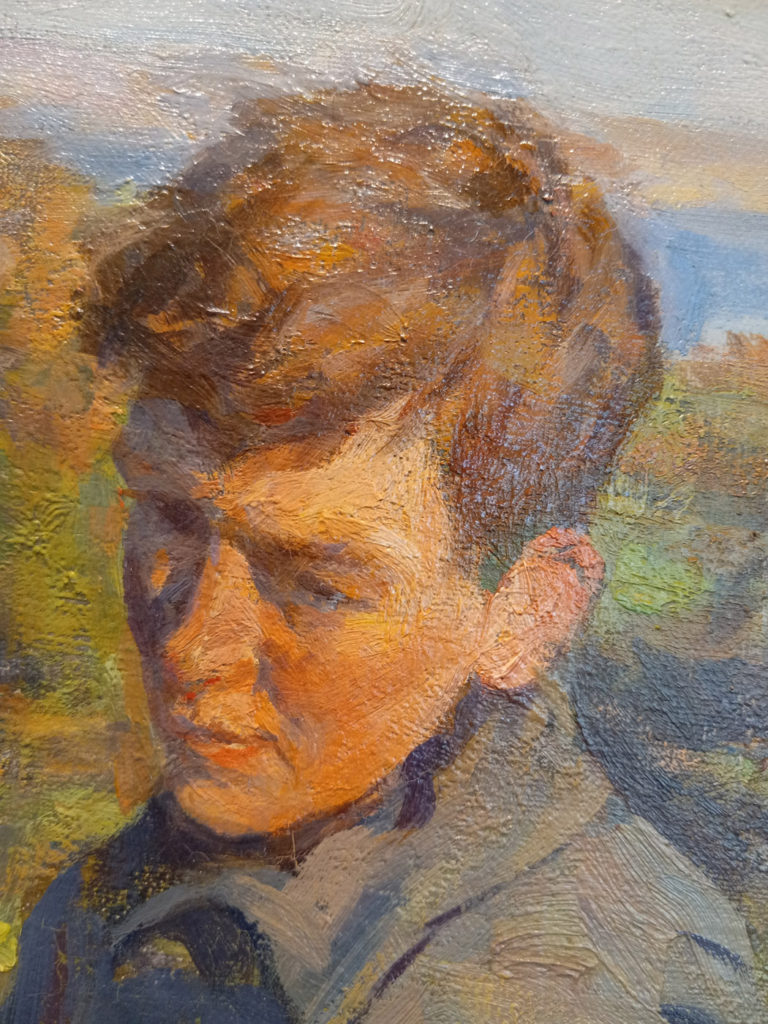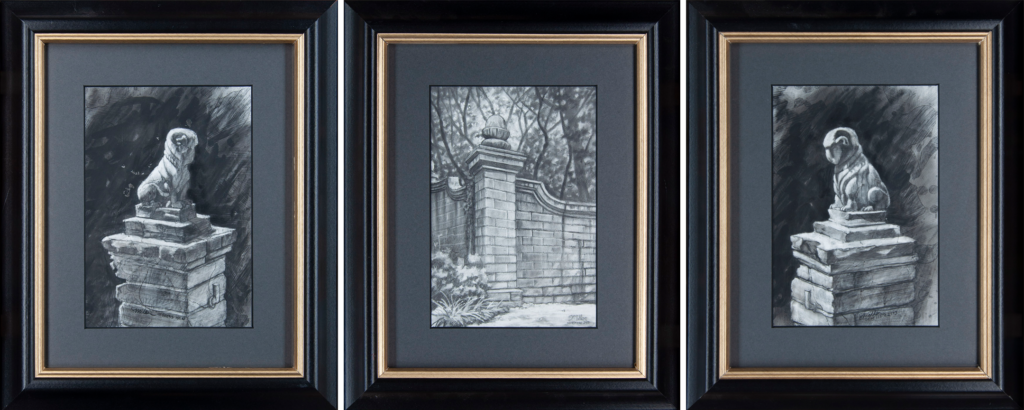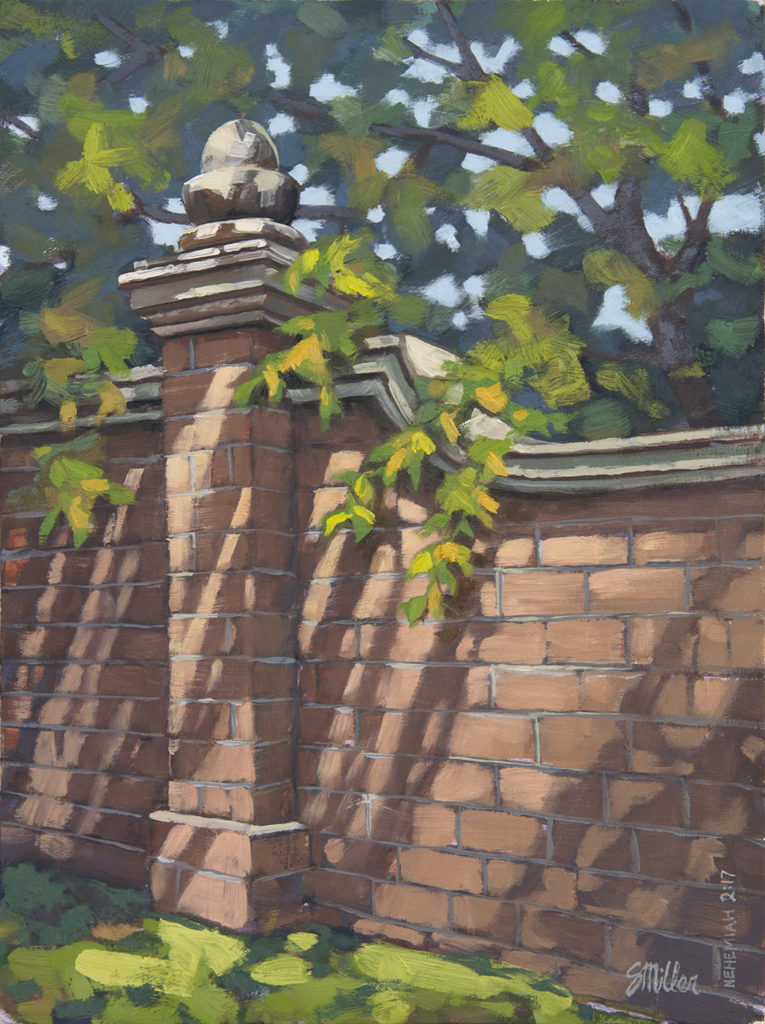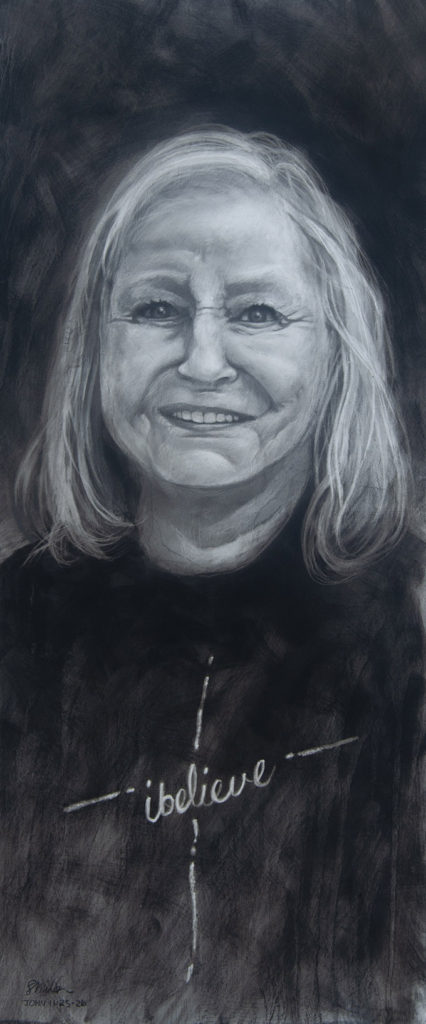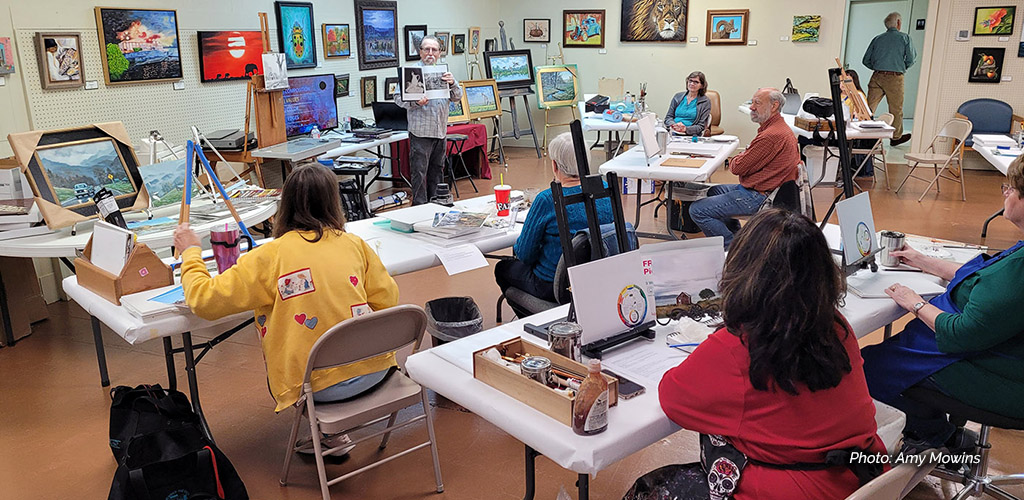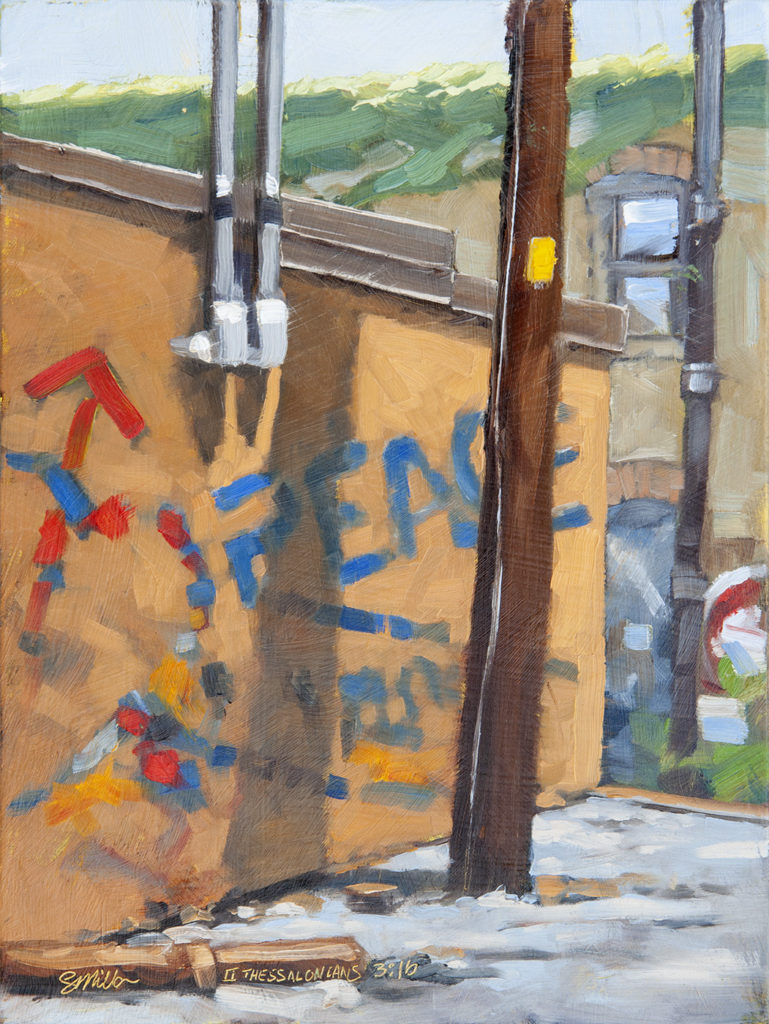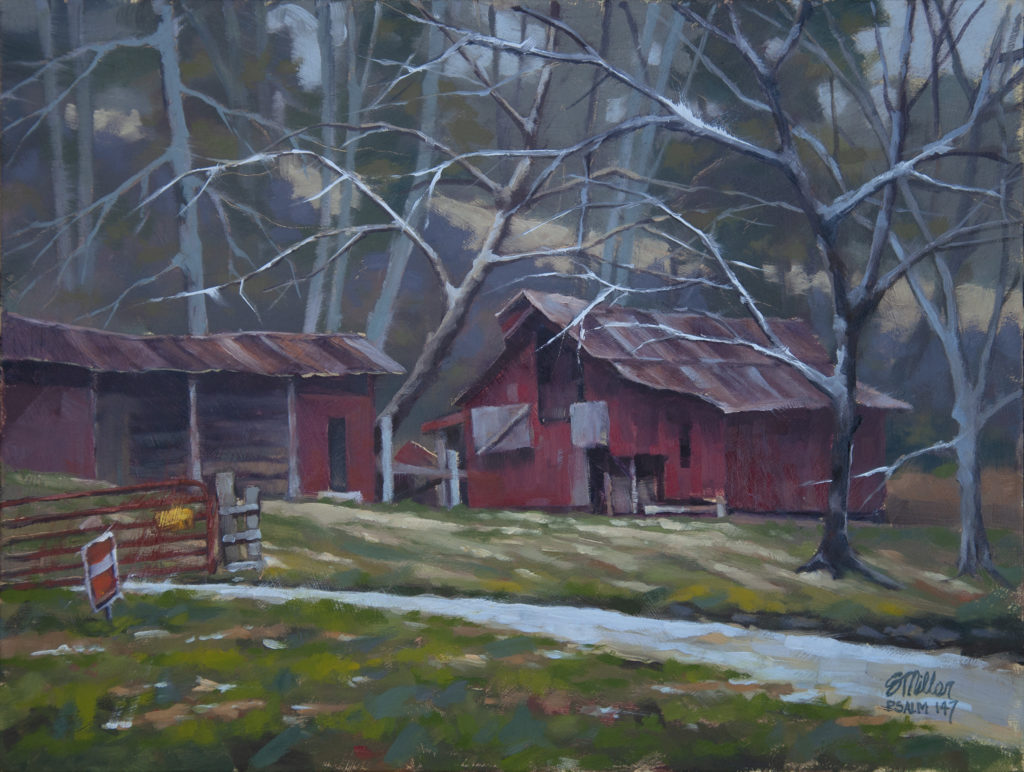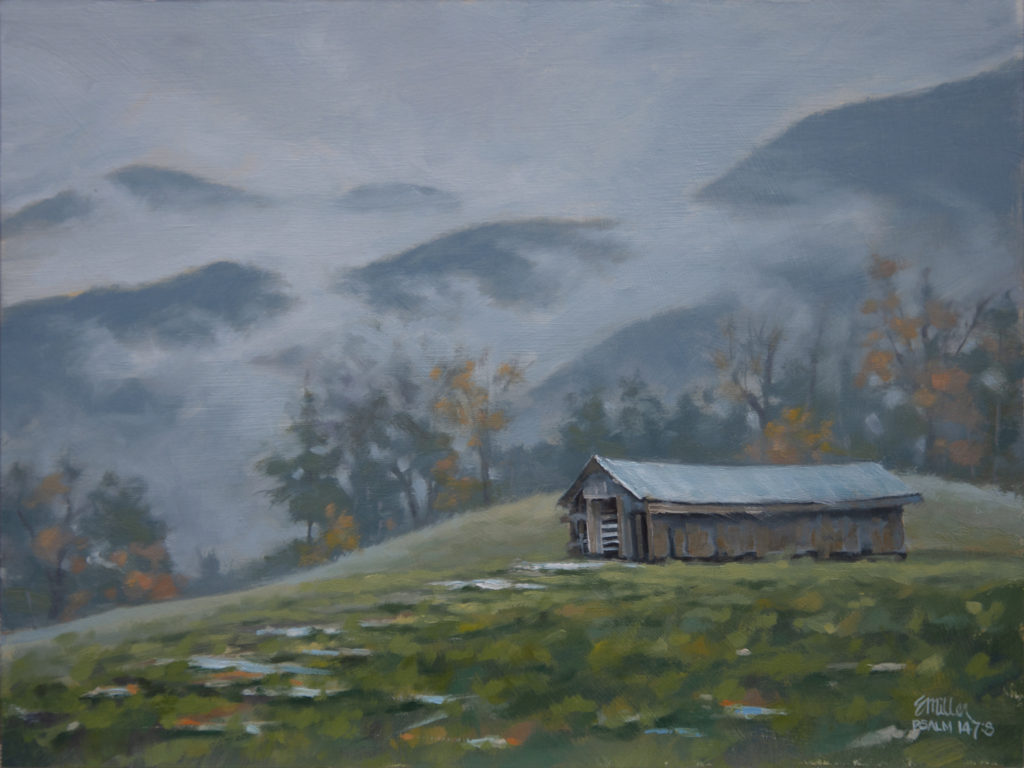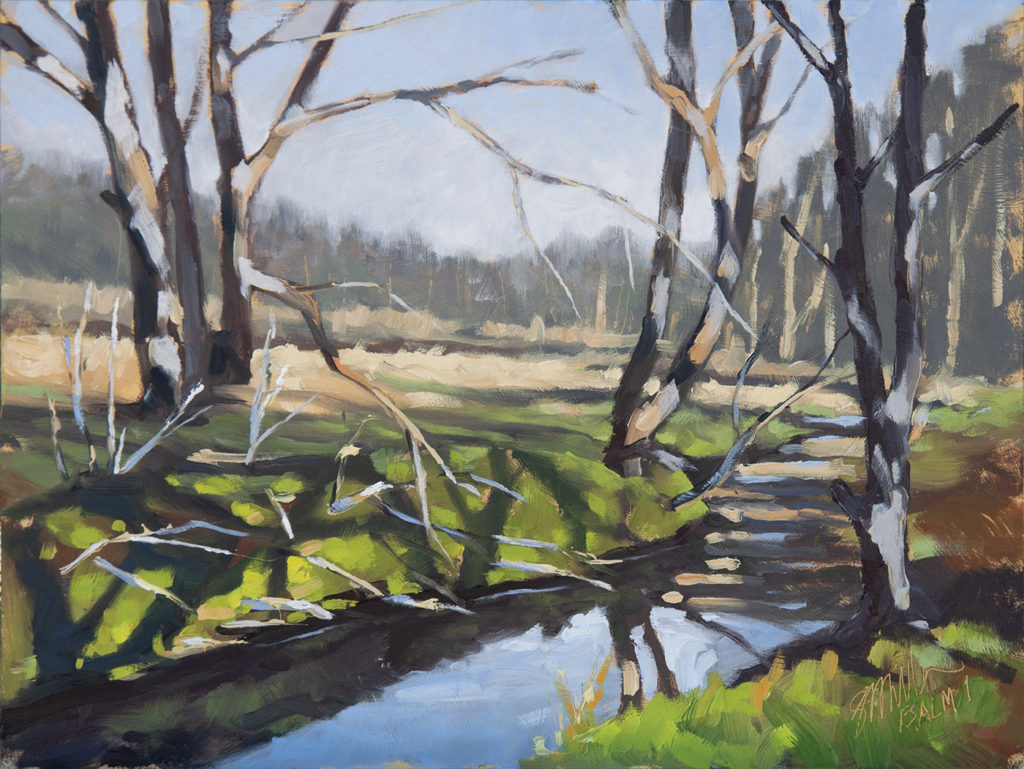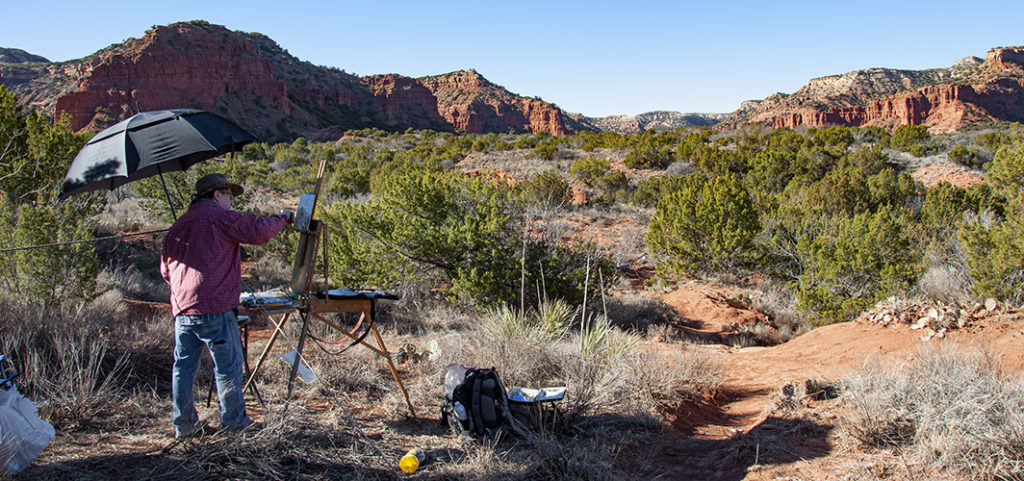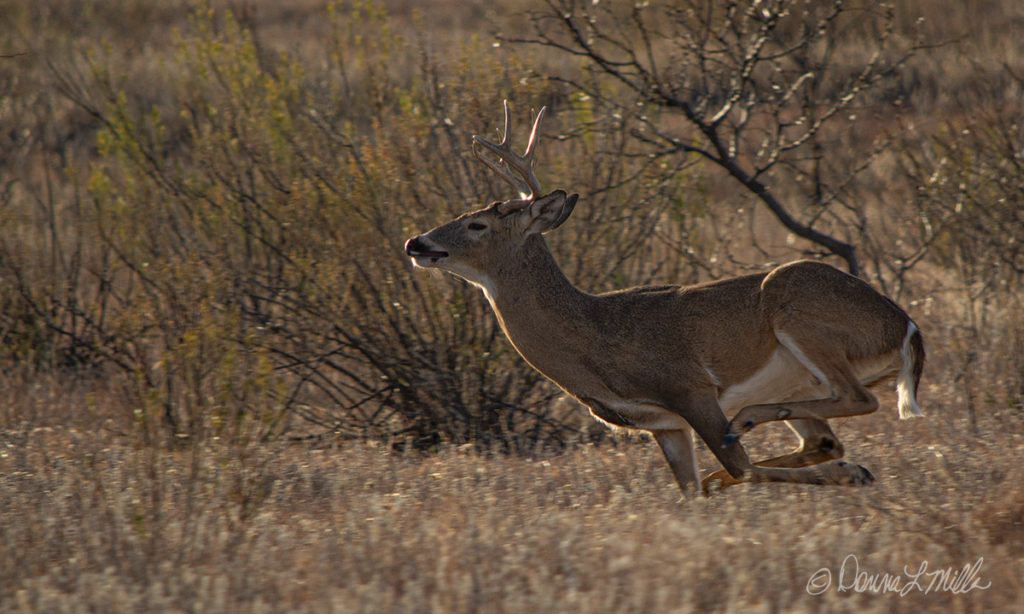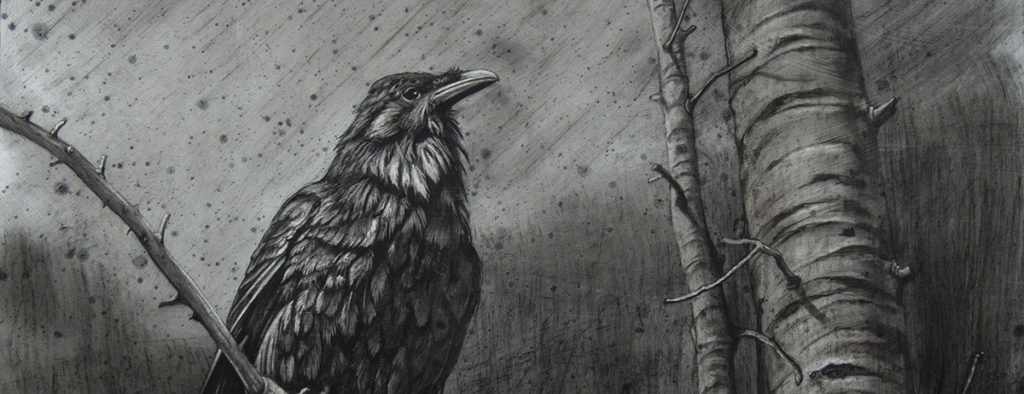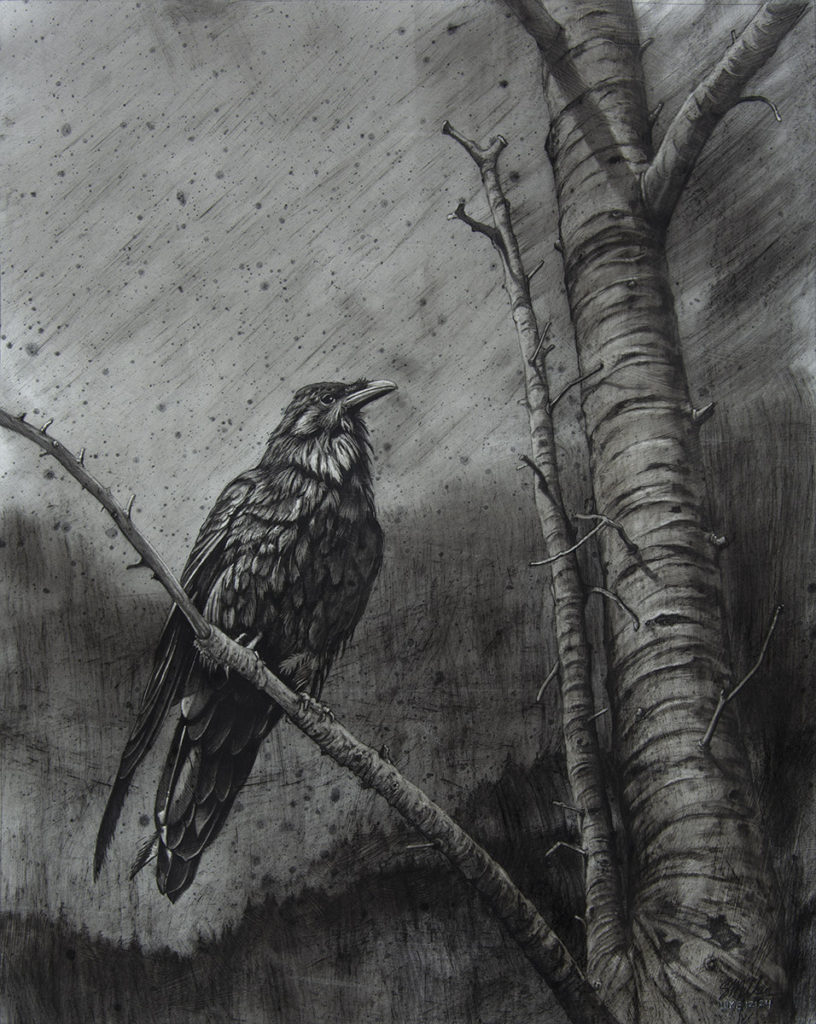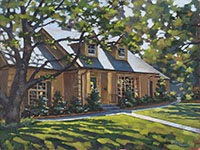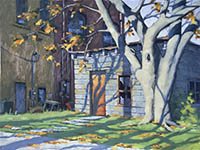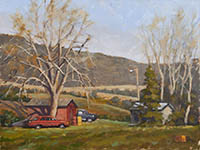Towards the end of last year, I was blessed by an old friend and gallery owner to produce a couple of commissions for one of his clients. The project was for two oil paintings. Each painting was to be 16 x 20 in size. The subject of each was U.S. Federal Courthouses. The first was the Eldon B. Mahon U.S. Courthouse in Fort Worth, Texas, and the second was to be the John Minor Wisdom U.S. Court of Appeals in New Orleans, Louisiana.
The Eldon B. Mahon is listed in the National Register of Historic Places and is a bit of a mix of architectural styles. Built in the “Art Moderne style, it incorporates classical elements. Art Deco lanterns of aluminum and glass, Aluminum grilles in Mayan ziggurat, Plains Indian arrows and Egyptian lotus motifs are of few of the Art Moderne elements incorporated in this building.
Although the overall building is perhaps a unique and excellent work of art, painting the building as seen from the street was a bit mundane. It basically looks like a big box, with the above mentioned elements not really seen unless the viewer was very close to the building. It was a bit of a challenge but paled when compared to the next painting – the John Minor Wisdom U.S. Court of Appeals, New Orleans, Louisiana.
The architect for the New Orleans Federal Courthouse was James Gamble Rogers of the New York architectural firm, Hale and Rogers. The architectural style is Italian Renaissance Revival. Construction began in 1909 and was completed in 1915. The building materials is White marble walls on gray granite base with copper roof and corner pavilions. There are also four monumental coper and bronze sculptures by Daniel Chester French on the roof of the building.
Restoration of the building began in 1971 and was completed in 1972. About 1972, before the courthouse took his name, Senior Judge of the United States Court of Appeals fo the 5th Circuit, John Minor Wisdom, said: “It is probably the finest courthouse in the country…This fine old building was built in a time when they built well…Its preservation means a lot to New Orleans and Louisiana.”
In order to get solid, original reference material for this courthouse painting, my wife and I made a brief trip to New Orleans for a “photo shoot”. Once we located the building in downtown New Orleans, I have to say the building is impressive. I love the architectural detail. Every doorway and window was embellished with intricate stone work, columns… detail stacked on detail. And the front side which contained the “Focal point” of the painting, had 8 Corinthian columns, recessed porches and endless detail in the entablature that bordered the top of the building. My recurring thought during the next few weeks of working on this piece was “what did I get myself into?”
As I mentioned at the beginning of this post, the commission of these two works was a blessing indeed. I am always grateful for work, and working though the challenges are simply part of it.
I find architecture fascinating on many levels. My grandfather on my mother’s side of the family was a carpenter and a farmer and an all around “builder” of things. He lived his life in the old South, in the northern region of Georgia. He built houses and pretty much anything that could be made of wood. As a kid, my brother and I were always into his carpentry “things”; it seams the DNA for building and creating was passed on to us and we have created and built things over the years since we were kids visiting my grandfathers place in north Georgia.
Building and creating things is part of that “image” we bear as an image bearer of God. Genesis 1:26 says:
“Then God said, “Let Us make man in Our image, according to Our likeness; and let them rule over the fish of the sea and over the birds of the sky and over the cattle and over all the earth, and over every creeping thing that creeps on the earth.” NASB
I guess an entire life could be spent digging into exactly all that verse means in its depths; to bear the image of God. But for now, I simply want to focus on building and creating.
God’s word is remarkable. Some have described it as a love letter to mankind. God instructs, encourages, warns and teaches through His Word. And is very simple terms God describes Himself in many passages. He does this because He loves us and wants us to enter into a relationship with Him. And the simple “good news” is that that is done through His Son, Jesus.
In scripture God describes himself as “Father”. Simple and clear. He also describes Himself as “Creator”. He creates things. And another fascinating description is that he is a “Builder and Architect”.
In a section of the famous “Faith Chapter” of Hebrews, we read about the faith of Abraham. How he believed and obeyed God and left his familiar country, lived as a foreigner, all the while looking to the future, trusting God. Then in verse 10 of Hebrews 11 it says:
“… for he was looking for the city which has foundations, whose architect and builder is God.” – Hebrews 11:10
Interesting… God the builder and architect.
In the scriptures we also see that if you are a believer, you join with God to both build and be part of a “building” God is building.
“For we are God’s fellow workers; you are God’s field, God’s building. According to the grace of God which was given to me, like a wise master builder I laid a foundation, and another is building on it. But each man must be careful how he builds on it. For no man can lay a foundation other than the one which is laid, which is Jesus Christ. I Corinthians 3:9 thru 11
So it seems that the “visual” imagery of this Builder/Architect is this: When a person comes to Faith in Jesus Christ as their savior, we become part of a “building” of believers that God is building. And, we join in the building process as well. Why? Because God loves us with a crazy love, a love that Rich Mullins describes in the lyrics of one of his songs as “the reckless, raging fury that they call the love of God!”
“AND HE CAME AND PREACHED PEACE TO YOU WHO WERE FAR AWAY, AND PEACE TO THOSE WHO WERE NEAR; for through Him we both have our access in one Spirit to the Father. So then you are no longer strangers and aliens, but you are fellow citizens with the saints, and are of God’s household, having been built on the foundation of the apostles and prophets, Christ Jesus Himself being the corner stone, in whom the whole building, being fitted together, is growing into a holy temple in the Lord, in whom you also are being built together into a dwelling of God in the Spirit.” Ephesians 2:17 thru 22
More Texas Architecture…























